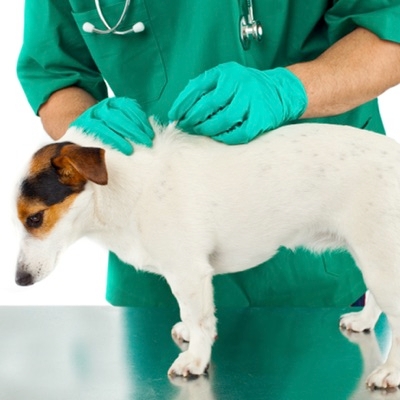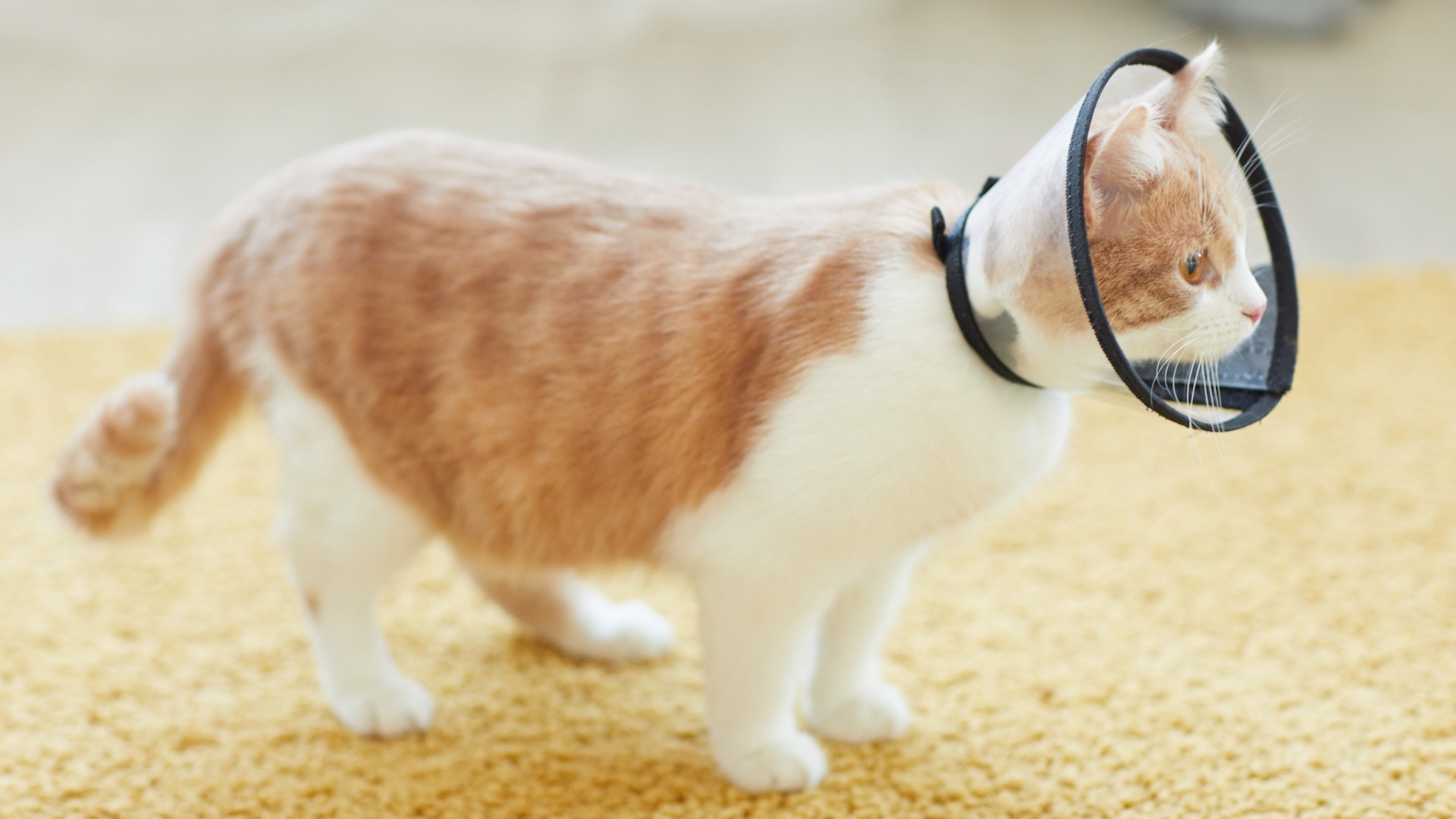Fleas:
Summary:
Fleas are small insects that survive by feeding on animal or human blood. Their bites can cause discomfort, itchiness, and irritation. Sometimes, fleas can infect people or pets with the germs that cause flea-borne typhus, plague, or cat scratch disease.


Fleas are small insects that survive by feeding on animal or human blood. Their bites can cause discomfort, itchiness, and irritation. Sometimes, fleas can infect people or pets with the germs that cause flea-borne typhus, plague, or cat scratch disease.
Avoiding Fleas
Preventing Fleas on Your Pets
Dogs and cats are very susceptible to fleas, but they can be protected. To prevent fleas on your pet:
- Limit the amount of time your pet spends outdoors.
- Limit contact with wild and stray animals.
- Bathe and brush pets regularly.
- Check for fleas regularly.
- Fleas prefer warmer and more humid months, but if there is an animal to feed on, fleas can survive year-round.
- Talk to your veterinarian about flea control products that are right for your pet.
- Treat pets for fleas year-round in order to kill adult fleas and prevent new ones from hatching.
- Always follow product instructions.
- If you find a flea on your pet or in your home, learn how to get rid of fleas right away to avoid further infestation.
Preventing Flea Bites
The best way to prevent fleas on people is to keep pets free of fleas. Most fleas in the United States prefer to feed on animals, however, people are sometimes bitten out of convenience when they share space or come into contact with a flea-infested animal.
To protect yourself from fleas:
- Use Environmental Protection Agency (EPA)-registered insect repellents containing DEET, picaridin, IR3535, Oil of Lemon Eucalyptus (OLE), para-menthane-diol (PMD), or 2-undecanone. EPA's helpful search tool can help you find the product that best suits your needs. Always follow product instructions. Do not use products containing OLE or PMD on children under 3 years old.
- Covering skin with long-sleeve clothing and pants will minimize exposure to bites. Flea bites often occur on the lower legs and feet, protect these areas with long socks and pants.
- Treat clothing and gear with products containing 0.5% permethrin. Permethrin can be used to treat boots, clothing and camping gear and remain protective through several washings. Alternatively, you can buy permethrin-treated clothing and gear.
- Do not feed or pet stray or wild animals.
- Always wear gloves if you are handling sick or dead animals.
Additional plague prevention tips are available.
Preventing Fleas in the Home
It's easier to keep fleas out of your home than it is to get rid of them. Fleas can live in carpets, bedding, and other surfaces in the home where pets frequent. To prevent an infestation:
- Sweep or vacuum well and often. Vacuum your carpets and rugs as well as cushions on chairs and sofas. Be sure to empty the vacuum bag outside when finished.
- Clean bedding, especially pet bedding, frequently with soap and water.
Preventing Fleas in the Yard Fleas prefer habitats with shade, as they cannot tolerate the sun for long periods. To prevent flea infestations, make your yard as unattractive to fleas as possible by:
- Mowing frequently. Mowing exposes the soil to the sun, which fleas try to avoid.
- Avoiding over-watering. Fleas thrive in humid environments so keeping the yard dry makes it less inviting.
- Treating dog runs with insecticides to make it less prone to fleas.
- Raking thoroughly to remove any debris. This increases flea exposure to potential insecticides and removes any shaded and humid breeding places.
- Keep rodents and animals (e.g. opossums) away from your home:
- Store food, including pet food, in tight sealing containers.
- Remove brush, rock piles, junk, and cluttered firewood outside of your home.
- Seal up holes in your home where rodents can enter.
- Keep tight lids on compost and trash cans.
- The CDC's rodents website offers helpful suggestions on rodent control during and after a rodent infestation. Additionally, wild and stray animals commonly carry fleas. Put away pet food to discourage stray animals from hanging around your home and limit your pet's contact with wild and stray animals.
Getting Rid of Fleas
Getting rid of fleas is a difficult process due to the long lifecycle of a flea. Moderate to severe infestations will take months to control and require a four-step process for complete elimination:
- Sanitation. Thoroughly clean areas where fleas frequently breed. This includes washing bedding, rugs, and pet bedding, and thoroughly vacuuming and sweeping floors and carpeted areas and along the edges of walls.
- Pet treatment. Every pet in the home must be treated. Thoroughly bathe pets with soap and water, then comb them with a flea comb. Pay careful attention to face and neck regions, and the area in front of the tail. Soap will act as a gentle insecticide to kill adult fleas. Talk to your veterinarian about choosing the right flea control product for your pet.
- Home treatment. Begin home treatment at the same time as pet treatment. This keeps all treatment on the same timeline and helps disrupt the flea life cycle. A licensed commercial pest control applicator can help you determine which products are best for inside your home and in the yard. In general, focus outdoor treatment on shady areas and places where pets spend the most amount of time.
- Follow-up. Fleas have a complex life cycle. At some stages of their life cycle they are resistant to insecticides and other flea control products. In order to get rid of fleas in all stages of the life cycle, two or more follow-up treatments within 5-10 days after the first application are needed. Additionally, vacuuming and sanitation practices should be ongoing throughout this period to pick up all remaining eggs and juvenile fleas.
Fleaborne Diseases of the United States
In the United States, some fleas carry pathogens that can cause human disease, including:
- Plague — most commonly transmitted to humans in the United States by infected ground squirrel fleas, Oropsylla montana, and globally by infected Oriental rat fleas, Xenopsylla cheopis. Also, may be transmitted by improperly handling an animal infected with plague bacteria. Most U.S. cases occur in rural areas of the western United States.
- Flea-borne (murine) typhus — transmitted to people by infected cat fleas, Ctenocephalides felis, infected Oriental rat fleas, Xenospylla cheopis, or their feces (poop; also called "flea dirt"). Most cases in the United States are reported from California, Texas, and Hawaii.
- Cat scratch disease (CSD) — transmitted to humans most often after a scratch from a domestic or feral cat that has been infected by a Ctenocephalides felis flea, or through flea feces (poop; also called "flea dirt") being inoculated through a cat scratch. CSD occurs wherever cats and fleas are found.
- Fleaborne parasites, such as tapeworms can spread to people and animals if they accidentally swallow an infected flea. Small children are at a higher risk than adults, as they may spend more time close to the floor and carpeted areas where fleas are found. Most infected people will not show symptoms and will not know they are carrying tapeworms.
How Fleas Spread Disease
How fleas survive
Most fleas have four life stages: egg, larva, pupa (in a cocoon), and adult. The lifecycle of fleas can be very quick or last many months to years depending on the environmental conditions throughout the life stages.
- After finding an animal or human host and taking a blood meal, adult fleas will mate and begin laying eggs in the fur and surroundings of the host. Eggs will hatch in one to ten days depending on environmental conditions such as temperature and humidity.
- After hatching from an egg, fleas enter their larval stage. Larvae are free moving and feed on blood and flea feces (poop; also called "flea dirt"), in order to continue their development.
- Within 5-20 days of feeding on flea dirt, the larvae will spin a cocoon, and enter the pupa stage. The cocoon protects pupa from environmental conditions and insecticides/repellents for several days or weeks until adult fleas are ready to emerge.
- Adult fleas will not emerge from the cocoon until there is a clear presence of a host, such as movement or body heat, which will signal that there is a blood meal readily available.
- Adult females begin to feed from a host within a few hours of emerging from the cocoon and soon after will mate and begin laying eggs.
How fleas find their hosts
Fleas prefer animal hosts but will resort to biting people when animals are unavailable. Adult fleas find hosts by detecting body heat, movement, the vibrations caused by movement, and breathing.
How fleas spread disease
Fleas transmit germs that cause disease primarily through the processes of feeding on hosts or through fecal contamination, when infected flea feces (poop; also called "flea dirt") are scratched into an open wound.


